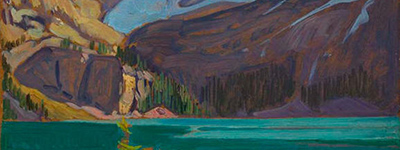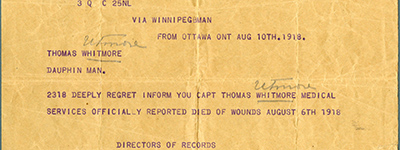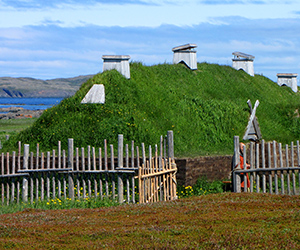CANADA HISTORY - Places-Archeological
Head Smashed in Buffalo Jump

Head-Smashed-In Buffalo Jump, located in southern Alberta, is one of Canada’s most significant cultural and archaeological sites. It holds a deep connection to the Indigenous peoples of the Great Plains and serves as a vital link to thousands of years of history. Recognized as a UNESCO World Heritage Site in 1981, it represents a unique and ancient method of communal hunting used by the Plains people, specifically the Blackfoot, for nearly 6,000 years. The site is not only a testament to the ingenuity and resilience of the Indigenous peoples but also a major symbol of Canada’s broader heritage.
Origin and Background
The buffalo, or American bison, was central to the lives of Indigenous peoples of the North American plains. Every part of the animal was used—its meat for food, hides for clothing and shelter, bones for tools and weapons, and sinew for thread. Hunting buffalo was not only a means of survival but also embedded in the cultural and spiritual practices of many Plains nations, including the Blackfoot Confederacy, which includes the Piikani, Kainai, and Siksika nations.
For thousands of years, the Indigenous people employed sophisticated hunting techniques to take advantage of the buffalo’s behavior. One of the most remarkable techniques was the use of buffalo jumps, where skilled hunters would stampede a herd of buffalo toward a cliff, causing the animals to fall to their deaths. Head-Smashed-In is one of the most well-preserved and significant buffalo jump sites in North America. The cliff stands 36 feet (11 meters) high, and the area at the base is littered with layers of buffalo bones, accumulated over millennia of use.
The Name: Head-Smashed-In
The origin of the name "Head-Smashed-In" comes from a local Blackfoot legend. According to the story, a young Blackfoot boy wanted to witness the buffalo falling from the cliff during a hunt. He positioned himself at the base of the jump, hoping to get a closer look at the spectacle. As the herd thundered over the edge, the boy was tragically crushed beneath the weight of the falling animals, his head “smashed in” between the cliff and the buffalo carcasses. This name, passed down through oral history, speaks to the awe and danger associated with the buffalo jump and underscores the deep cultural significance the site holds for the Blackfoot people.
Archaeological Significance and Historical Discovery
The archaeological significance of Head-Smashed-In was recognized early in the 20th century, though its use as a buffalo jump dates back over 5,700 years. Archaeologists studying the site have uncovered evidence of large-scale, organized hunts, revealing the sophisticated knowledge and communal efforts of the Plains peoples. Layers of bones, stone tools, and butchering sites have been excavated, offering an incredible window into the past. These findings show that the buffalo jump was not just a random occurrence but a highly planned event involving hunters, scouts, and runners who would direct the buffalo to their deaths.
The site also provides evidence of the extensive butchering and processing that took place after the hunt. Archaeologists have found remnants of stone tools used to skin and butcher the buffalo, along with large cooking pits where meat was prepared. This demonstrates the communal aspect of the buffalo jump—entire communities worked together to ensure that nothing from the buffalo was wasted.
The Interpretive Centre and Highlights
In 1987, an interpretive center was opened at Head-Smashed-In to educate visitors about the history and cultural importance of the buffalo jump. The building itself is a marvel of architectural design, as it is built into the side of the cliff, blending seamlessly with the natural landscape. The center offers a rich multimedia experience, including exhibits, films, and guided tours that explain the traditional hunting techniques, the role of the buffalo in Plains Indigenous culture, and the archaeological findings from the site.
One of the highlights of the interpretive center is the "Drive Lane," a visual representation of how hunters would corral the buffalo toward the cliff using stones and other natural features to guide the herd. The exhibit showcases the skill and coordination required to ensure a successful hunt. Another significant feature is the collection of artifacts, including stone tools, arrowheads, and hide-scrapers, that demonstrate the technological prowess of the Plains people.
The center also features cultural programming that emphasizes the ongoing importance of the site to the Blackfoot people. Indigenous interpreters lead storytelling sessions, traditional music performances, and cultural demonstrations, ensuring that the history shared at Head-Smashed-In remains a living tradition rather than simply an archaeological study.
Relation to Canada and Impact on Canadians
Head-Smashed-In Buffalo Jump is a vital cultural touchstone for understanding the history of the Plains Indigenous peoples and their connection to the land. For Indigenous communities, the site remains a place of spiritual and cultural importance. The buffalo jump is not just a relic of the past but a symbol of resilience and the continuing relationship between the Blackfoot people and their ancestral lands.
For Canada as a whole, Head-Smashed-In plays a crucial role in the broader narrative of the country's Indigenous history. It is a reminder that Indigenous peoples had complex societies with sophisticated hunting strategies long before European contact. The preservation of this site, and its designation as a UNESCO World Heritage Site, reflect Canada’s commitment to recognizing and honoring the history of its Indigenous peoples.
The site has also become an important educational tool for Canadians. By visiting Head-Smashed-In, Canadians can engage directly with a critical part of the nation’s history, gaining insight into the pre-colonial era and the ways in which Indigenous peoples adapted to and thrived in their environment. It fosters a deeper understanding of Indigenous contributions to Canada’s history, helping to bridge gaps in knowledge and appreciation for the diverse cultures that have shaped the country.
Moreover, Head-Smashed-In has become a significant tourist attraction, drawing visitors from across Canada and around the world. Its role as a cultural site promotes not only tourism but also cultural exchange, as people from different backgrounds come to learn about the Indigenous traditions and history of the region. The site contributes to Alberta's economy while fostering greater appreciation for the heritage of the Blackfoot people and Plains Indigenous cultures.
Head-Smashed-In Buffalo Jump is a site of immense cultural, historical, and archaeological importance. Its name, derived from a poignant Blackfoot legend, reflects the deep connection between the site and Indigenous traditions. The buffalo jump itself serves as a testament to the ingenuity of the Plains peoples, who developed highly effective communal hunting techniques that sustained their societies for millennia.
The interpretive center at Head-Smashed-In not only preserves this rich history but also shares it with Canadians and the world, emphasizing the ongoing cultural significance of the buffalo and the Plains peoples. By recognizing this site as a UNESCO World Heritage Site, Canada acknowledges the profound role Indigenous communities have played in shaping the land and its history. For both Indigenous peoples and Canadians at large, Head-Smashed-In stands as a symbol of resilience, knowledge, and the enduring relationship between people and nature in Canada's history.
Cite Article : Reference: www.canadahistory.com/sections/documents/documents.html
Source: NA



